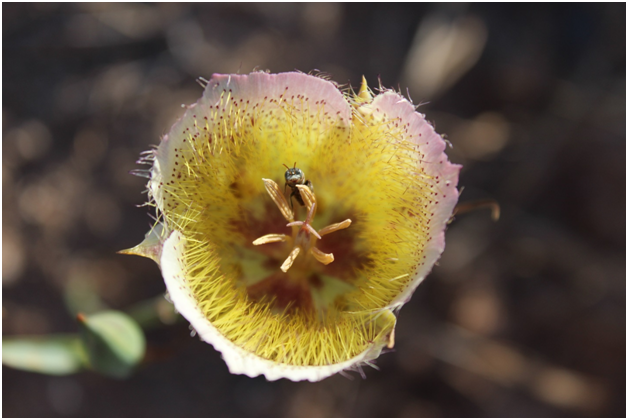National Pollinator Week is June 19-25! Pollinators are incredibly important to the plants and animals that live in our local wildlands. The process of pollination occurs when pollen is transferred from one flower to another through the wind or with the help of an animal that is looking to make nectar its next meal. These animals inadvertently get pollen attached to their bodies and carry it along to the next flower. Once a flower has been pollinated, it will produce fruit which provides resources for animals as well as seeds to make new plants.
The ideal home for a pollinator includes a wide variety of native plants that are clustered together. Pollinators need food all year round, not just in the spring when the wildflowers bloom, so it’s essential to have late flowering plants such as Epilobium canum (California fuchsia) and Deinandra fasciculata (clustered tarweed) mixed into the habitat.
From the miniscule Ceratina bee to the iconic monarch butterfly, pollinators come in many different shapes and sizes. According to the Xerces Society, there are 1,200 – 1,500 native bee species and over 200 butterfly species in California. Butterflies and bees aren’t the only pollinators that you can find while out exploring. Even bats and male mosquitoes can be pollinators! Next time you’re out enjoying the open space, watch for flowers that have hummingbirds, ants, flies, and flower beetles collecting nectar and pollen.
Help Laguna Canyon Foundation celebrate National Pollinator Week by doing your part to protect our open space. To promote diversity of pollinators, we need to work together to protect, preserve, and restore as much native habitat as possible. Sign up for an event at the Native Plant Nursery in Laguna Coast Wilderness Park to help participate in seed collecting, seed starting and plant care on the second Saturday of every month. With your help, these native species will be planted into the park and will help to support our local pollinators.

